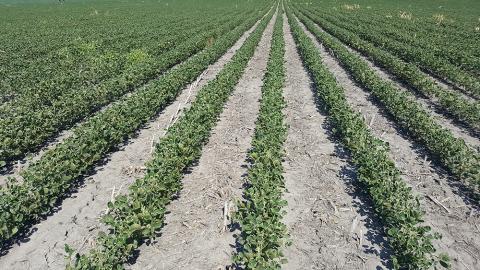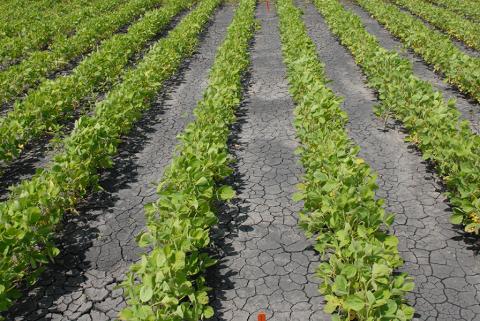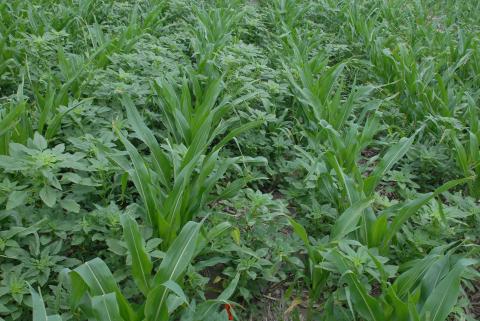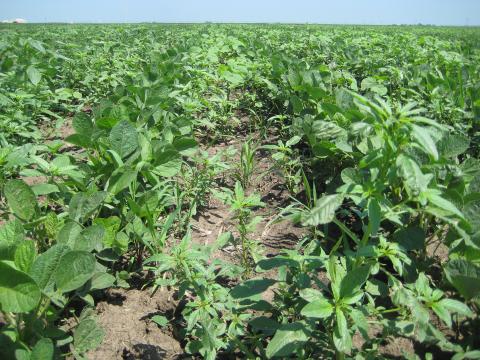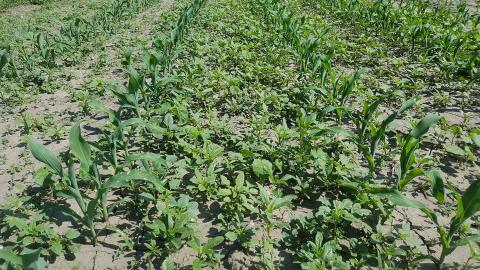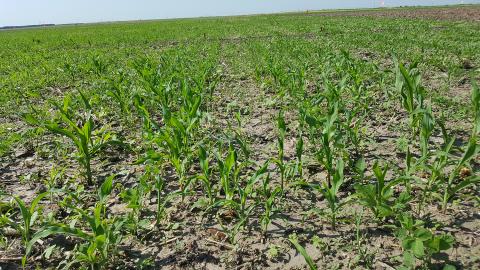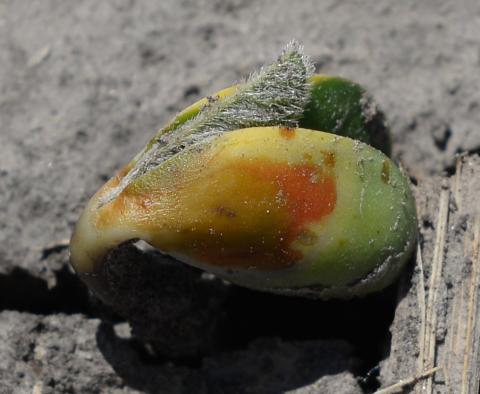Dicamba Injury Reports Rise in Nebraska
July 18, 2017
Reports of suspected dicamba injury to soybean and other sensitive crops are increasing. The author reviews application windows for dicamba in corn, a possible area of concern, and outlines what growers can do if they suspect dicamba injury in their fields.
Liberty Label Revision Allows Rate Increase
July 13, 2017
Liberty has revised its label to provide for an increased application rate in corn and soybean. View the new label rates for corn and soybean with a cumulative maximum per year of 87 fl oz/acre for either crop.
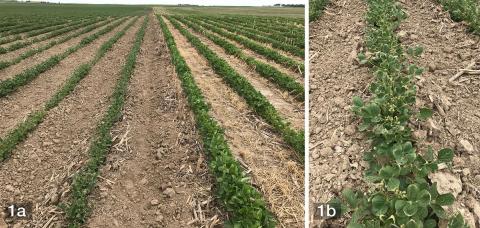
Dicamba Injury Symptoms on Sensitive Crops
June 28, 2017
Dicamba-resistant soybean, genetically engineered to provide resistance to dicamba and glyphosate, was made commercially available for the 2017 growing season. This article looks at potential dicamba injury to sensitive crops and plants.
Grower Q&A: Is this Herbicide-Resistant Palmer Amaranth?
June 23, 2017
This week growers facing challenges with Palmer amaranth questioned whether it was due to the product, the environment and lack of rain, or a resistant weed. Several factors could be at play, notes a UNL weed scientist, who recommends starting with preemergence herbicides with residual activity to get the best control.
Consider Application Restrictions of Postemergence Herbicides Based on Soybean Growth Stage
June 19, 2017
It's important to consider soybean growth stage and preharvest interval when applying postemergence herbicides to avoid potential crop injury. This article describes how to determine crop growth stage and includes a table of application restrictions for common postemergence herbicides.
Consider Corn Growth Stage When Applying Postemergence Herbicides
June 14, 2017
When applying postemergence herbicides, consider corn growth stage, weed species present, and crop and weed heights. The article includes how to determine corn growth stage, recommendations to avoid problems, and a table of application restrictions for common postemergence herbicides.
Control of Glyphosate-Resistant Volunteer Corn in LibertyLink Soybean
June 12, 2017
Controlling glyphosate-resistant volunteer corn is a major challenge in some soybean fields this year as preemergence herbicides aren't very effective. Postemergence herbicides will be critical to its management.
PPO-Inhibiting Herbicides and Soybean Seedling Injuries
June 5, 2017
Cool, wet soil conditions in late April and May may have enhanced the potential for soybean injury from PPO-inhibiting herbicides. The author describes plant injury symptoms to look for when scouting young soybean seedlings.


